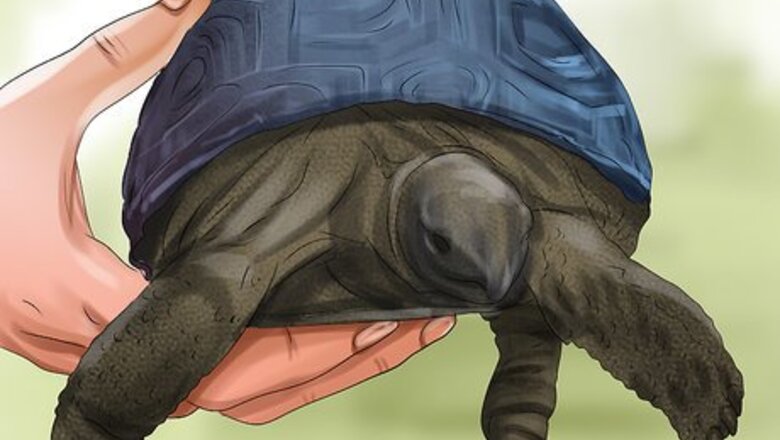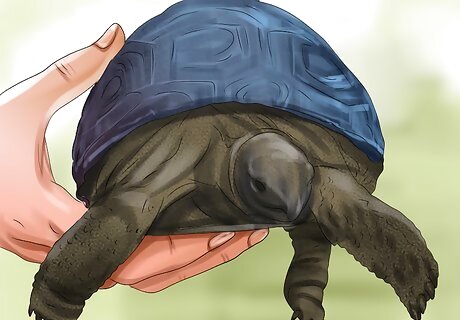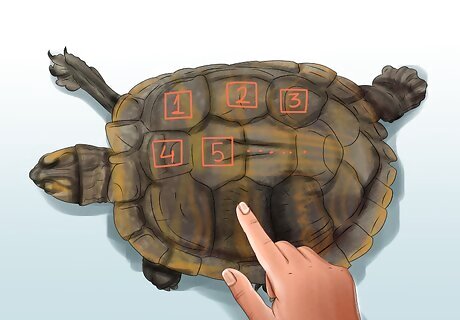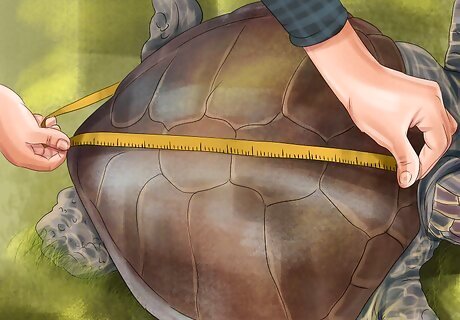
views
Counting Rings

Pick one "scute" to count. You want to count rings on the turtle's scutes to help determine age. The scutes are the scales that cover the turtle's shell. Keep in mind, this method only gives you a very rough estimate, as rings often develop in periods of feast and famine for turtles. In other words, they may develop when the turtle was very hungry or had a lot of food, rather than just in winter and summer.

Count the rings. The rings within the scutes will usually alternate between wider rings of one color and narrower rings of another color. In theory, the wider ring represents a period of good eating, typically the warm season. On the other hand, the narrower ring represents a period of scarcity, often in the winter. Therefore, if you count the rings and divide by 2, you have a general estimate of the turtle's age. Look for the rings. You don't want to count scutes, as scutes do not reflect the turtle's age. Rather, you want to look at the rings within the scutes.

Estimate the age. After counting the rings, take a guess at the turtle's age. For instance, if the turtle had 14 rings, you can guess that the turtle is 7 years old, as every 2 rings may represent a year. A turtle will have rings whether in captivity or the wild. After 15 years of age, it's very difficult to tell the age, as the rings get closer and closer together.
Checking the Size

Measure your turtle. A turtle's size can indicate age, particularly if it is fairly young. Start by measuring it from tip to tail so you get a basic idea of how big it is. Try to get the turtle to stand still so you can use a ruler to measure. Having an enticing treat can help get the turtle to pull its head out of the shell.

Find the typical sizes of the species. Find a growth chart for your particular species. Make sure to find your specific turtle, as even turtles with the same name can come in different sizes. You can look online or find a library book about your turtle's species. For instance, a southern painted turtle usually doesn't get bigger than 6 inches (15 cm), while a large western painted turtle may grow to 8 inches (20 cm). Turtles bred in captivity tend to grow faster than their wild counterparts. Note that this increased size can give a false impression of the turtle’s age.

Compare your turtle to the size chart. Once you've found a size chart, look at your turtle in relation to the chart. You may be able to estimate your turtle's age if it hasn't reached its full size yet.



















Comments
0 comment